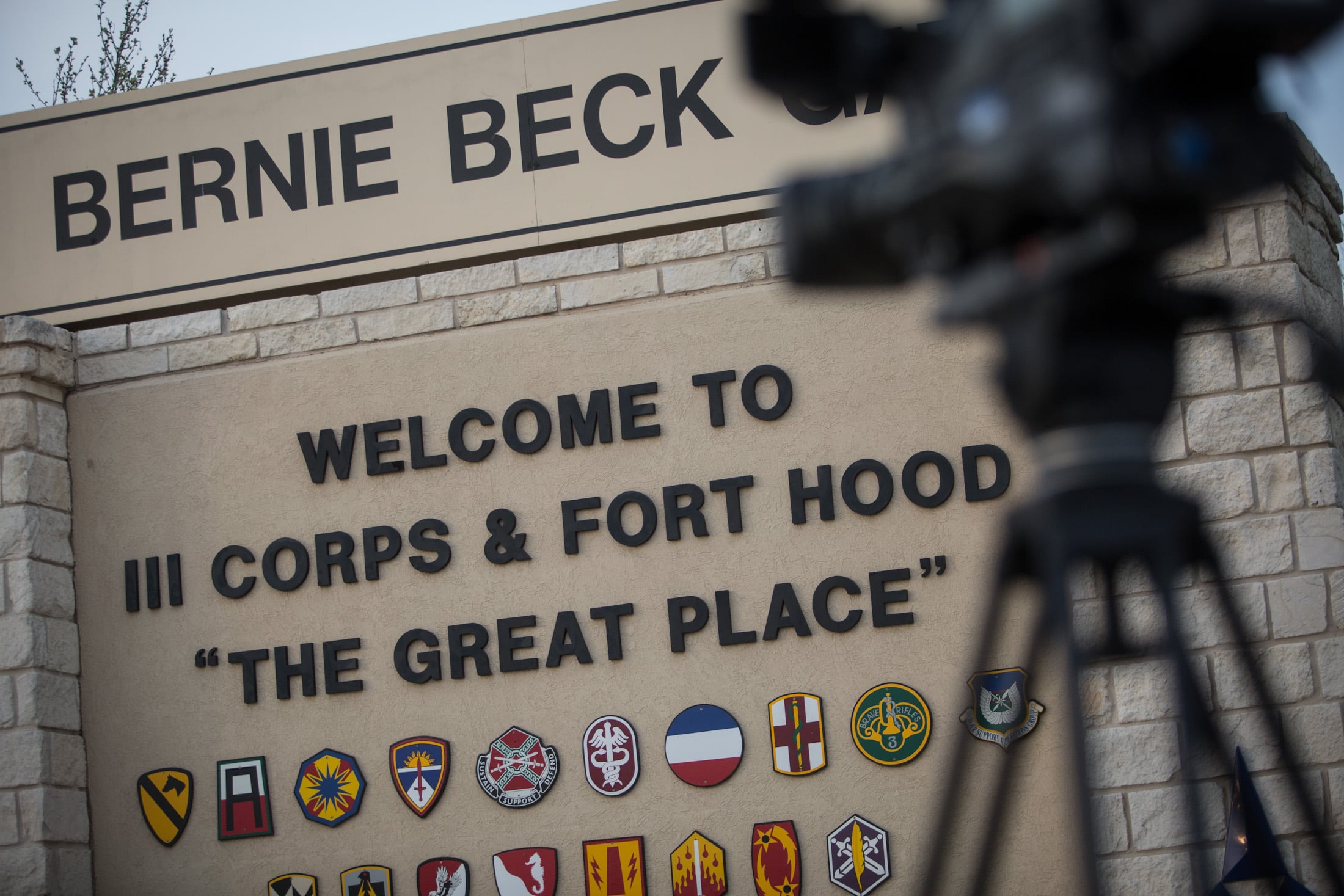Four Navy ship crews received the combat action ribbon, or CAR, this summer after coming under enemy fire last fall, the first time the sea service has provided such a recognition in more than 25 years.
Sailors on the destroyers Mason and Nitze, as well as those on the amphibious transport docks Ponce and San Antonio, received the decoration in June, Navy officials said.
As the services battle land-based insurgencies on the post-9/11 battlefield, the Navy‘s engagement with enemy forces at sea has been nearly nonexistent.
That record skipped in October 2016, when Houthi rebels based in Yemen fired on the ships as they traversed the Red Sea.
For their responsive actions, the involved sailors can now wear a ribbon not bestowed upon their brethren for operations in international waters since the 1991 Gulf War.
The Mason and the Ponce were operating in international waters in the south Red Sea on Oct. 9, 2016, when they took incoming from two coastal defense cruise missiles fired from Yemen’s rebel-controlled areas, according to Navy records.
The Mason responded by engaging the first missile with two Standard Missle-2s, one Evolved Sea Sparrow Missile and two radar decoys.
As a result, the Mason become the only Navy ship to successfully fire the Sea Sparrow while under attack, according to the Navy.
The ships then maneuvered southwest, opening the Yemeni coast in the process, with the Mason staying in a screening position along the threat axis, according to the records.
A second rebel missile was fired about an hour later and fell into the sea due to it not having enough fuel to reach the increased range Mason achieved in its defensive measures.
The Ponce engaged its own defense weapons and maneuvered in a way that allowed the Mason to provide a protective screen as they left the area.
The Ponce’s crew also provided support via her video collection system that provided proof the force had been engaged by cruise missiles, while also providing maneuvering recommendations that moved the ships out of harm’s way, according to Navy records.
A few days later, the Mason came under fire as it escorted the San Antonio and merchant vessel Green Ridge in the Red Sea.
Another coastal defense missile was fired at the ship by the rebels, and the Mason again engaged the missile by firing a SM-2 missile.
Mason stayed in position along the threat sector as the other ships moved north into safer waters.
The splash point was within 10 miles, a defense official told Navy Times shortly after the incident, referring to the distance from the ships that the missiles reached before crashing into the water.
“So when you’re talking about something traveling at 500 to 600 miles per hour, that’s not a lot of time,” a defense official said.
A few days after that incident, the Mason’s crew once again countered a Houthi missile threat.
This time, rebels fired five anti-ship cruise missiles, according to the Navy.
The Mason fired off a radar decoy, an infrared decoy and several SM-2s in response. But that only took care of four of the missiles.
The fifth was incoming on the accompanying destroyer Nitze. The Mason’s crew alerted Nitze to the threat, and she utilized a radar decoy.
Again, the Mason and her crew remained in a defensive screening position as the other ships moved to safety.
In recognition of its successful defense of the other ships, the Mason also received the Navy’s Battenberg Cup last month, a prestigious award given out to the Navy crew with the year’s best performance.
It caps a good 2016 for the men and women of the Mason. They were also awarded the Golden Anchor for personnel program excellence, as well as the 2016 Battle Efficiency “E” and unit tactics awards from Destroyer Squadron 26.
The crew traveled roughly 64,000 nautical miles in the Atlantic Ocean, the Mediterranean, Celtic and Red seas, the Arabian Gulf, Gulf of Oman and the Indian Ocean.
The Helicopter Maritime Strike Squadron 74 conducted near-daily flight operations as well, with 348 sorties.
“I could not be more proud of Mason sailors,” the skipper, Cmdr. Stephen Aldridge, said. “It was truly a team effort.”
Geoff is the managing editor of Military Times, but he still loves writing stories. He covered Iraq and Afghanistan extensively and was a reporter at the Chicago Tribune. He welcomes any and all kinds of tips at geoffz@militarytimes.com.




